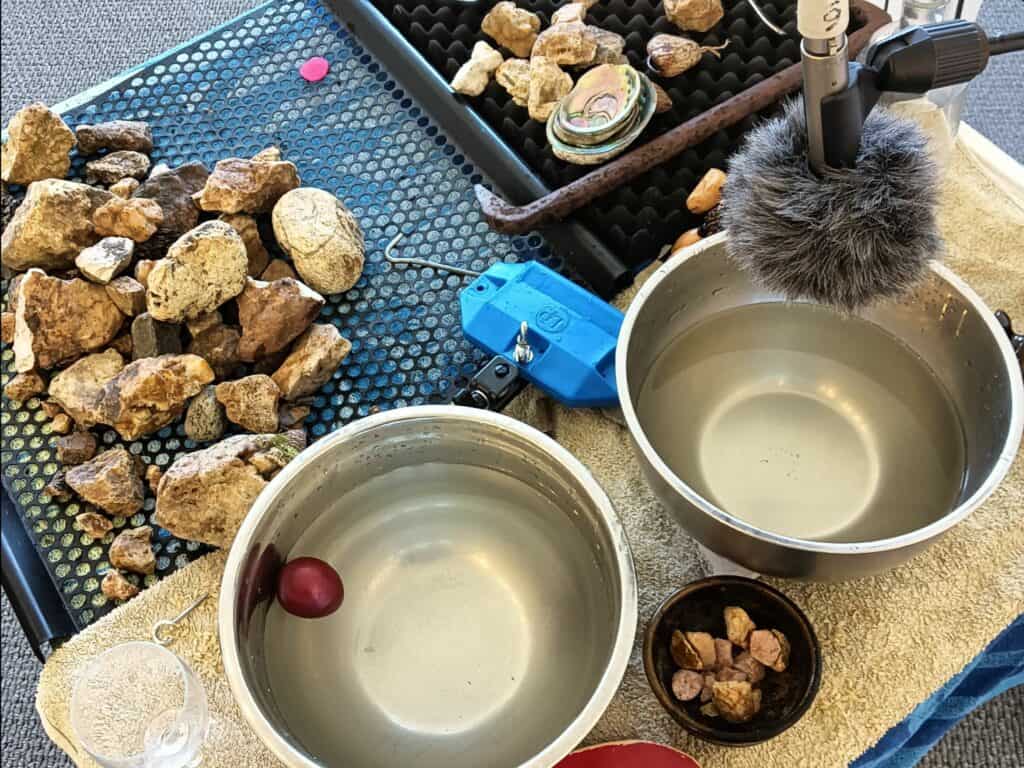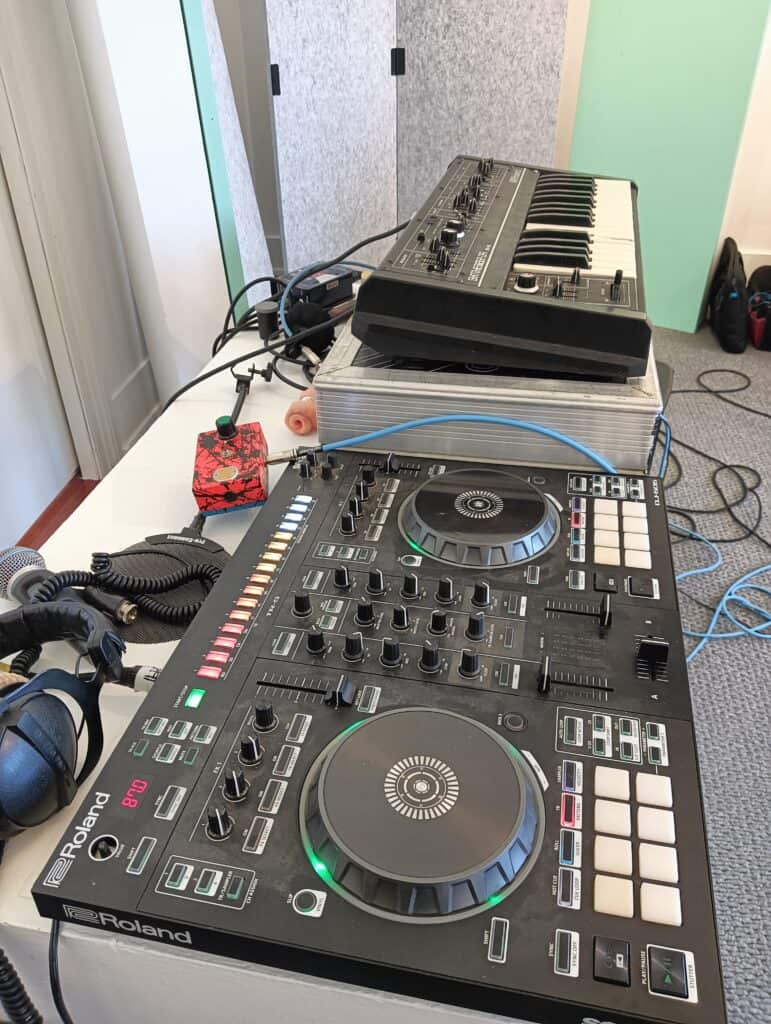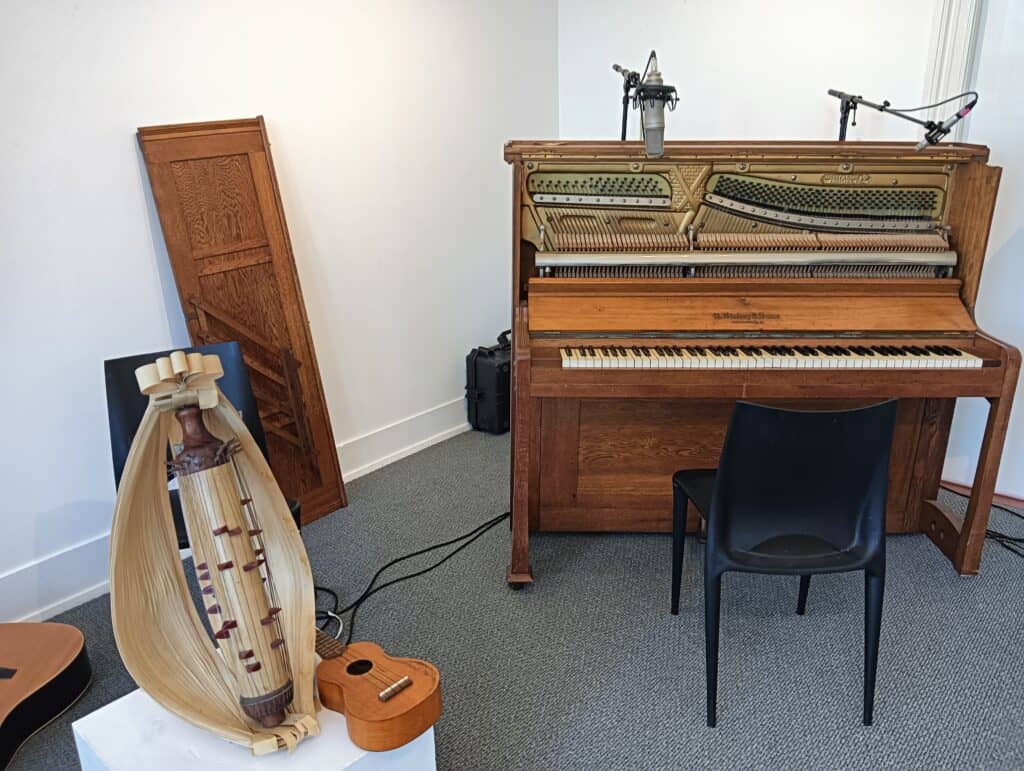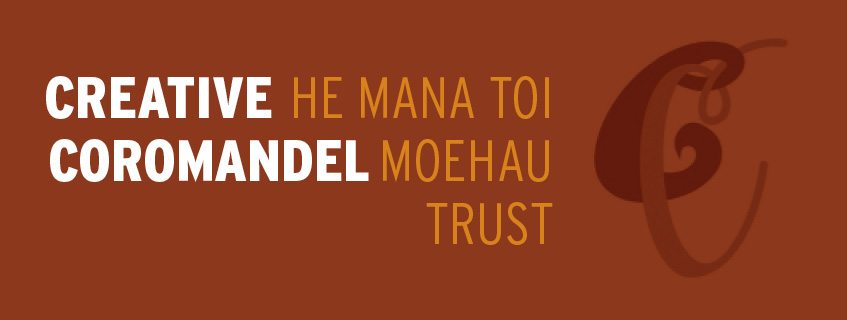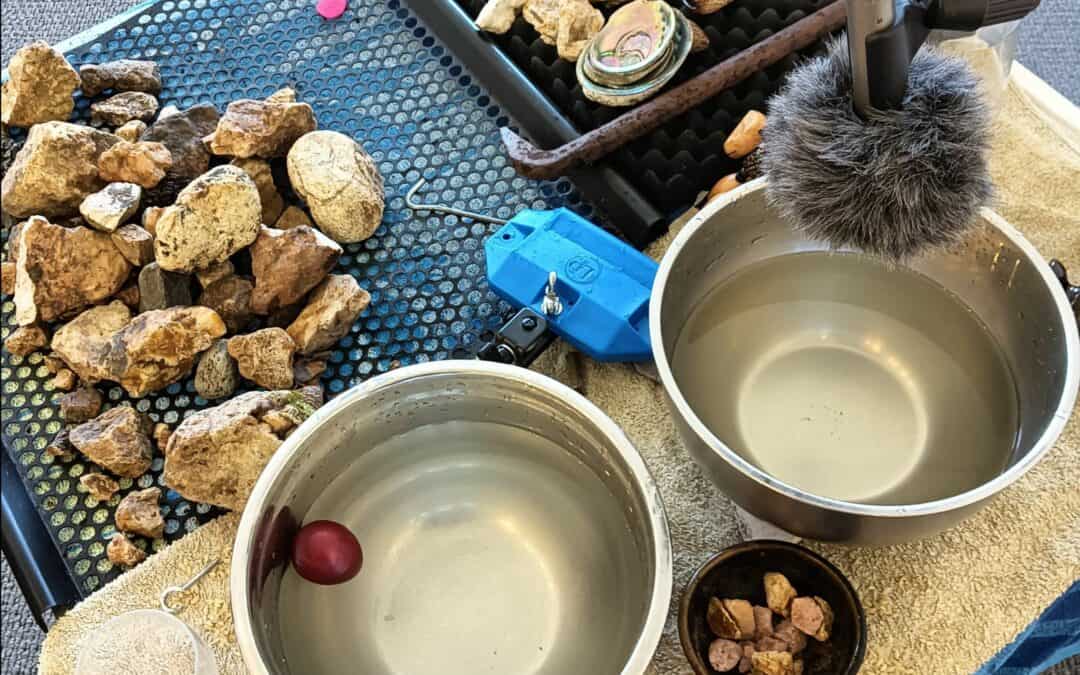In December, I took a sweet little Coro summer roadie up to Kapanga to check out Random Addition #3, an event that was part of our Coromandel Spring Artbeat Festival and something I’d been looking forward to for a long time and boy, it did not disappoint! Hosted by local legend Matt Sephton of Coro Sonic Lab, whose approach to audio centres around playfulness and exploration. Matt is well-known around the rohe as a talented audio engineer, producer and artist.
The accessibility of this event blew me away. You 100% do NOT have to consider yourself a musician or be able to play any kind of instrument to contribute to this soundscape. Random Addition is experiential and experimental in nature, so there are no wrong notes or mistakes; it is just pure auditory joy!
I had so much fun I mucked around for 2 hours experimenting with all the different stations and equipment. My personal highlights included the Water station (Various natural objects such as rocks, shells and organic materials placed alongside bowls of water in various volumes), an instrument that translates biodata from plants into music, the open panel upright piano and the Korg synth with a wacky theremin pedal.
I had the opportunity to catch up with Matt after the event and ask a few questions;
Q: In your words, what is Random Addition?
Random Addition is a collaborative community music-making project aimed at encouraging creative play with music. I set up my electronic production studio in Hauraki House Gallery, with instruments—electronic and acoustic, samplers, and synthesisers—various percussion instruments, and other things to make sounds with, such as rocks, water bowls, chains, glass, and ceramics. I also have microphones around the room to record everything.
“And then, for 10 days – with input from anyone who visits – we create a single piece of ever-shifting music, pieced together from the sounds and ideas made in the space.”
People of all ages, abilities and musical backgrounds are invited to explore different sounds, listen and experiment, sing, and tell stories. Each day, with every new person coming along, the piece grows and evolves with new ideas and directions.
I’m recording everything and creating loops and samples within the computer, using electronic production techniques to build the piece into something new and totally unique.
Q: How did this project come to life? Why do you do it?
This is the third Random Addition that I’ve done. It began out of a desire to get out of my normal studio space, to kind of short-circuit the creative process and connect with more people around the Coromandel community through music making. I wanted to create a creative environment that encourages playfulness, exploration, and randomness – where anyone can contribute and interesting ideas flow freely.
To remove the expectations of an end result, just have fun with sounds and music and bring as many people as possible into the process. So, to do
this, I thought the best way would be to just set everything up in the Gallery, open the doors and see what happens. Anyone can enjoy finding and making interesting sounds, not just musicians, and that’s one of the things I love the most – removing those barriers around who can make music and what we see as ‘good’ music.
Q: What fuels you to keep going?
I love the creative process in music making, that space where ideas are explored and teased out. However, I find too often that this loose creative process is quite a small part of music making – when you’re working towards an end result (i.e. trying to finish a song), the production process then moves on to the more technical stage -mixing, editing, refinement etc. Hence, Random Addition is 100% about staying in that creative play stage, not getting caught up in making it perfect, just keeping ideas loose, unrefined, and continuing to explore. Every new person that comes into the gallery has a different take on it, so going through that process with them is so much fun, hearing what people respond to and what sounds they like to make and hear. I love it when people are initially hesitant to get involved; they say they aren’t musical, etc; then, with just a little encouragement, they start playing, making sounds, exploring and creating something new and unique.
Q : How did this RA compare to previous ones, and what might be different next time? (Will there be a next time?)
There will definitely be a next time. I want to take this idea further and travel with it to engage with people from different communities who bring their unique approaches to the project. I might not do it for quite as long. Maybe 10 days was pretty hard going – the finished piece ended up being over 45 minutes long – and I do strive to have a piece of music that is more or less cohesive to listen to at the end – so this requires quite a bit of mixing and editing, which gets overwhelming after 10 days! So 5 days is better.
From the families passing through to the Sylvia Massey enthusiasts like me, there was truly something for everyone to find joy in and contribute to. I highly recommend this experience to anyone from the self-perceived “tone-deaf” to the audio engineers! An incredible project to be a part of and a fantastic manifestation of community collaboration at its finest right here in Te Tara-o-te-Ika-a-Māui. Huge thanks to Matt Sephton for running this event, and deep appreciation for all the mahi that goes into this project behind the scenes; we are incredibly fortunate to have you in our community and grateful for the skills and experience you make accessible.
*Random Addition #3 was made possible by Creative Communities Scheme (CCS) funding.
